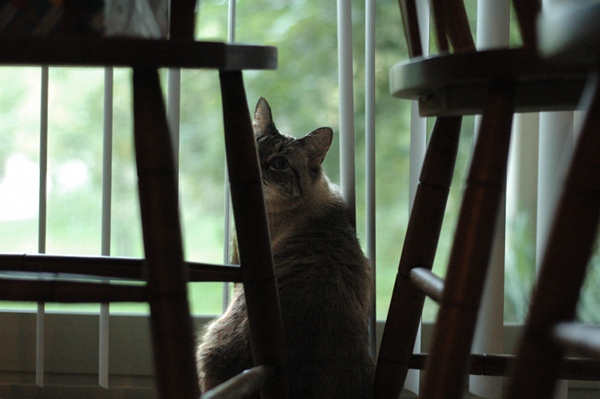Jasmine
It’s been a while since I used my camera. Yesterday evening, my girlfriend got her cat from home. I used the opportunity to take a few shots. As you may have guessed, her name (the cat’s) is Jasmine.



It’s been a while since I used my camera. Yesterday evening, my girlfriend got her cat from home. I used the opportunity to take a few shots. As you may have guessed, her name (the cat’s) is Jasmine.



You have seen me publish two posts about OpenIndiana, but neither of them really says what it is and why you should use it.
OpenIndiana started off as a fork of OpenSolaris. At first, its aim was to provide an alternative to Oracle’s soon-to-be-released Solaris 11, but lately its aim shifted to “an enterprise-quality OS alternative to Linux.”
OpenIndiana is much like a distro in the Linux world. It relies on the Illumos project for the kernel and basic userspace utilities (the shell, etc.). In September 2010, Illumos forked the OpenSolaris kernel and utilities, and OpenIndiana forked the surrounding userspace (the build system for all the packages that make the system usable).
It is the technology that is the reason I started using OI. Here are some of the features that either drew me in to try OI, or made me stay.
So there you have it. Sure, many of Solaris’s features are available in some shape or form on Linux, but they tend to be either horribly crippled, or if you are “lucky,” lacking sane management interface.
If you want to see what all this fuss is about, I suggest you grab the Live DVD (or Live USB) image on the download page and give it a try.
Back in June I got myself a new laptop — Thinkpad T520. As always, it’s a solid design (yes, I know, Thinkpads aren’t what they used to be). The unfortunate news is that the hardware was just a bit too new to be supported well. It came with Windows 7, which of course knew how to deal with all the devices in the system.
I tried installing Debian, but anything but the latest testing snapshot didn’t recognize my Intel 82579LM ethernet chip. The latest development snapshot installed just fine, but when I tried to boot into the installed system, everything got stuck in the middle of the initramfs. Booting with init=/bin/bash got me a shell, but anything and everything I tried didn’t fix the problem in the end. I searched the bug tracker for similar issues — no luck. In a last ditch effort, I tried to ask #debian. In has been my experience in the past that this channel is useless, but I asked anyway. I got precisely zero responses.
Unlike Debian, OpenIndiana installed and booted just fine. Sadly, both my wifi (Intel Wifi Link 1000) and my wired ethernet were not supported. I ended up installing VirtualBox in Windows and OpenIndiana underneath it. It worked reasonably well. At the same time, I started pestering some of the Illumos developers that mentioned that they were working on an update to the e1000g driver — the driver for my wired network interface.
Yesterday, one of them updated the bug related to the driver update with binaries for people to try. Well, guess what? I’m writing this entry in Vim over ssh.
The driver install was a simple matter of overwriting the existing e1000g files, and then running update_drv -a -i ’"pci8086,1502"’ e1000g and then rebooting. (I could have used devfsadm instead, but I wanted to make sure things would come up on boot anyway.)
I still need to switch Xorg to the proprietary NVidia driver.
I’m pretty sure I’ll end up rebooting into Windows every so often anyway…if only to play  Age of Mythology. :)
Age of Mythology. :)
P.S. In case you haven’t guessed it yet, Meili is my laptop’s hostname.
Over the past few months, I’ve played with Solaris — specifically, OpenIndiana, or OI for short. OI is a fork of OpenSolaris. OI’s first release happened on September 14, 2010. Today, exactly a year later, the OI community is proud to annouce the release of build 151a. The release notes say it all.
Personally, I find the KVM port to Illumos (the project that forked the core libs, programs, and OpenSolaris kernel) the most interesting. It’ll let me run (and manage!) virtual machines a bit more easily than what I get with VirtualBox. (Since OI now uses Illumos as the core Solaris upstream, it benefits from all the great work done by companies and individuals that contribute to Illumos.)
In case you are a bit confused, OI aims to be the defacto community Solaris distribution.
Oh, I almost forgot… 151a includes a package with Guilt (developer/versioning/guilt). :)
Powered by blahgd